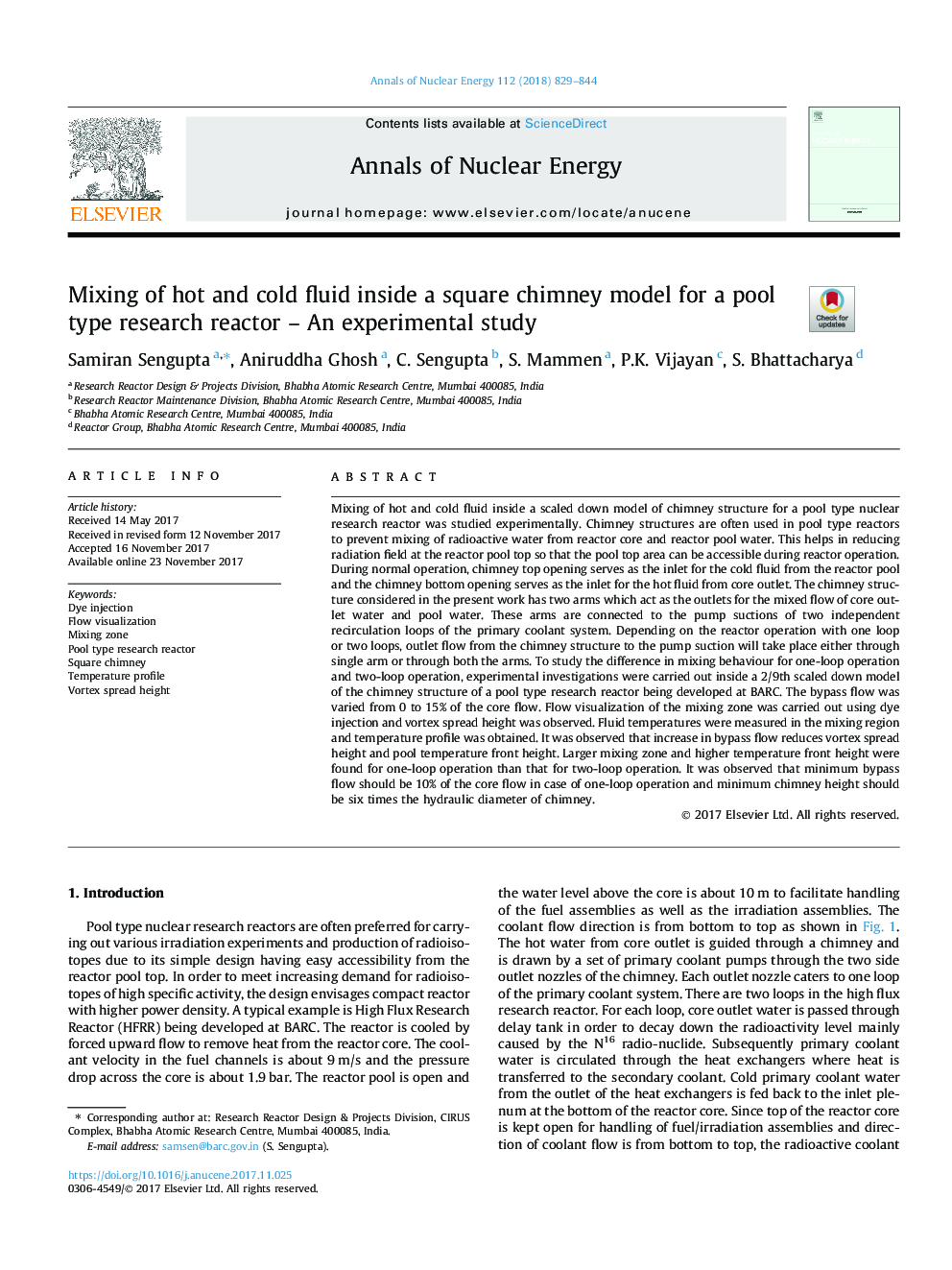| Article ID | Journal | Published Year | Pages | File Type |
|---|---|---|---|---|
| 8067305 | Annals of Nuclear Energy | 2018 | 16 Pages |
Abstract
Mixing of hot and cold fluid inside a scaled down model of chimney structure for a pool type nuclear research reactor was studied experimentally. Chimney structures are often used in pool type reactors to prevent mixing of radioactive water from reactor core and reactor pool water. This helps in reducing radiation field at the reactor pool top so that the pool top area can be accessible during reactor operation. During normal operation, chimney top opening serves as the inlet for the cold fluid from the reactor pool and the chimney bottom opening serves as the inlet for the hot fluid from core outlet. The chimney structure considered in the present work has two arms which act as the outlets for the mixed flow of core outlet water and pool water. These arms are connected to the pump suctions of two independent recirculation loops of the primary coolant system. Depending on the reactor operation with one loop or two loops, outlet flow from the chimney structure to the pump suction will take place either through single arm or through both the arms. To study the difference in mixing behaviour for one-loop operation and two-loop operation, experimental investigations were carried out inside a 2/9th scaled down model of the chimney structure of a pool type research reactor being developed at BARC. The bypass flow was varied from 0 to 15% of the core flow. Flow visualization of the mixing zone was carried out using dye injection and vortex spread height was observed. Fluid temperatures were measured in the mixing region and temperature profile was obtained. It was observed that increase in bypass flow reduces vortex spread height and pool temperature front height. Larger mixing zone and higher temperature front height were found for one-loop operation than that for two-loop operation. It was observed that minimum bypass flow should be 10% of the core flow in case of one-loop operation and minimum chimney height should be six times the hydraulic diameter of chimney.
Related Topics
Physical Sciences and Engineering
Energy
Energy Engineering and Power Technology
Authors
Samiran Sengupta, Aniruddha Ghosh, C. Sengupta, S. Mammen, P.K. Vijayan, S. Bhattacharya,
